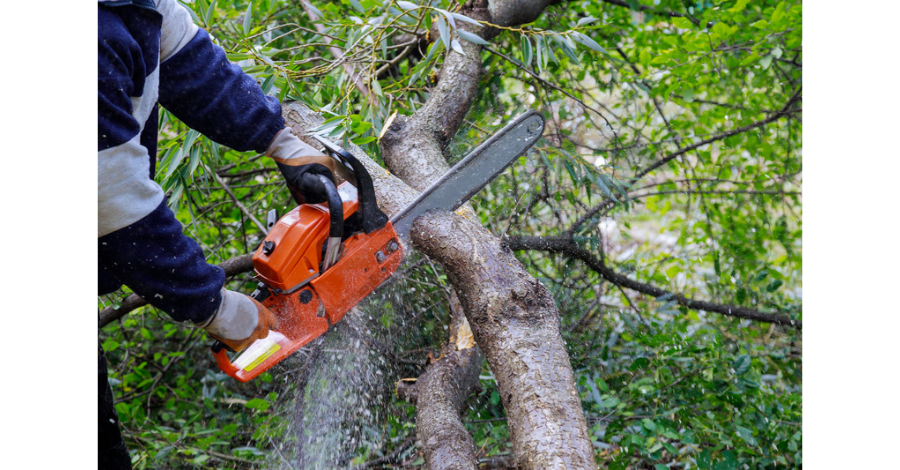
When a chain gets entangled, the sudden obstruction of motion causes the chainsaw to initiate movement in the opposite direction.
The chain’s teeth remove 1/4-inch pieces of material with each pass. And the blade is extremely sharp, allowing it to cut at high speeds.
Chainsaws make a high-pitched noise and can make the saw blade hot.
Chainsaws create a lot of vibration from the engine and from the act of cutting.
Chainsaws fueled by a combination of gasoline and oil produce toxic fumes when they combust.
Refuel a hot engine by spilling petroleum and be set on fire.
Cutting down chainsaw use by creating alternatives.
When starting the chain saw, keep at least six feet between yourself and everyone else. Position the chain saw on a stable surface with one foot on the rear handle. Position the top handle in one hand with the chain brake applied. Adjust the throttle lockout by pulling the recoil handle toward your chest.
Do not start a chainsaw by bumping it or jolting it into starting; wait for it to warm up before using.
Before starting the cut, grab the saw with both hands and keep your feet firmly in place.
Keep your left arm straight while standing to the side of the saw. Press the accelerator with your right hand. (Some models can be operated by right-handed users.)
Remove only one item at a time to avoid backlash. Position the chainsaw on its tail with the aid of the bumper to support it during the cutting process. Don’t force the process; let the engine’s power and sharp teeth do the work.
Before beginning the cut, make sure the saw is running at full speed by pulling it upward. If you feel resistance when trying to cut wood, your chain may be dull— which is dangerous and also increases your risk of developing HAVS.
Avoid operating the chain saw at waist height or higher.
Before moving the chain saw or placing it down, apply the chain brake and turn off the engine. Allow the chain saw to cool down before moving it.
Carrying or transporting the chain requires covering it with a bar guard. To do this, face the chain toward the ground and sideways with the nose of the bar behind you.
When transporting a chainsaw, use appropriate materials and methods to prevent movement. Avoid transporting a chainsaw in the passenger seat of a vehicle; instead, use a transport case. If possible, securely transport the chainsaw in a ventilated closet or outdoors.
To understand a device’s intended functions, learn its controls.
Personal protective equipment is equipment that provides protection from harm or injury.
Wear CSA or ASME-approved eye protection. Other eye protection may be required— such as a face shield — in some cases.
In order to reduce the risk of hearing damage, wear earplugs or earmuffs, protective boots and gloves when working in a noisy environment.
When using a chainsaw, don’t wear loose clothing, jewelry or scarves that are tied in knots, unbuttoned jackets or sleeves, jewelry around your neck or chains.
Maintenance procedures are necessary for continued operation.
Follow the maintenance instructions listed by the manufacturer for your specific chainsaw.
In addition to the owner’s manual, a copy is always available.
Before using the chainsaw, inspect it to check that its chain is snug, the guide bar is tight, the engine is lubricated, and the teeth are sharp. Inspect the drive trains, sprockets, chain catcher and cutter for damage. Move the saw at half speed while tightening the chain to ensure its functionality properly.
Avoid cutting damaged parts with a chainsaw.
Always keep the chain brake, throttle lock feature and other safety features such as graduated gauges unchanged.
Follow the manufacturer’s recommendations when ratio of oil to fuel is concerned.
The EPI — DDS has significant importance.
Before doing any work-related tasks, employees should attend to safety talks. These help the HSE management team create useful management tools.
The theoretical front of this service is merely suggestive and should be adapted to the work front by a professional in Safety, Environment, or Health. Alternatively, the HSE professional or leaders of the company or sectors should adapt their generic safety talks to the work front. Only the one who holds the Safety Talks can be held accountable for the talks on work fronts.
0 Comentários